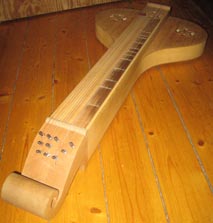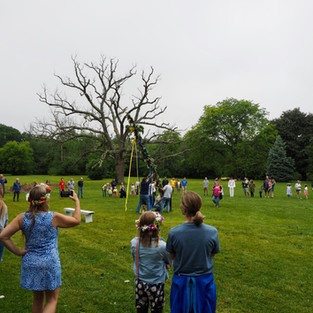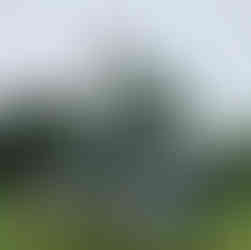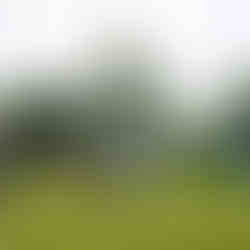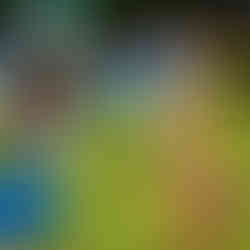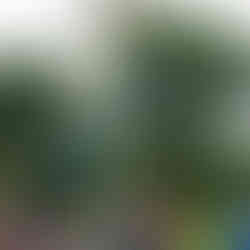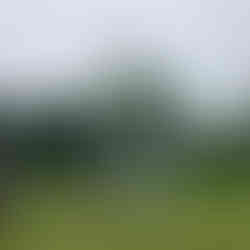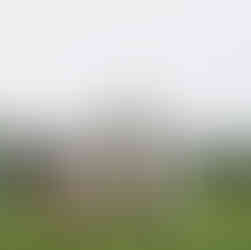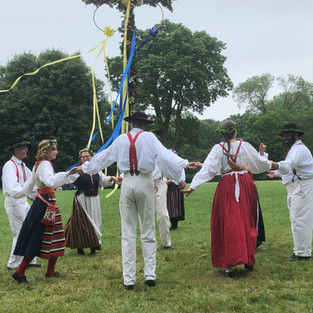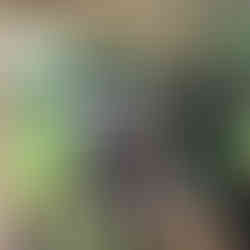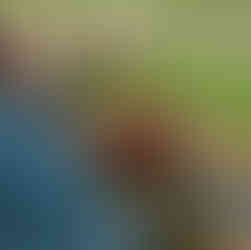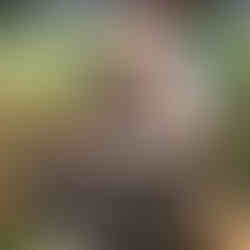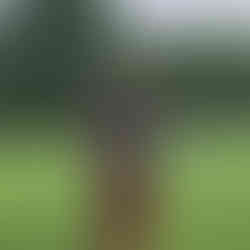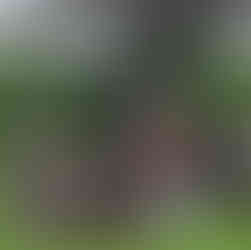The Musical Bridge - Scandinavian Folk Music
- Janae Jean
- Jun 19, 2019
- 10 min read
Updated: Nov 4, 2019
The Nordic Countries of Sweden, Norway, Iceland, and Denmark


So far on our musical journey we have explored musical instruments, styles, and genres of music that come from China and the Indus Valley region (found in modern day India and Pakistan.) Today, we are traveling far across the Eurasian continent to the Scandinavian countries of Sweden, Norway, and Denmark. Even though it is over 4,000 miles from Beijing, China to Stockholm, Sweden, we find musical instruments that are similar to those found in traditional Chinese music. In fact, some of the musical instruments probably share the same musical ancestors tens of thousands of years ago!
Here in Geneva, Illinois, mid-June means Swedish Days; this popular festival has over 200,000 yearly attendees who come from across Illinois and beyond to celebrate Scandinavian Midsummer. In Sweden and other Nordic countries, the Midsummer Festival or "Midsommar" is the most popular holiday other than Jul (Christmas). Though it is celebrated at the Summer Solstice (the first day of summer,) it is called "Midsummer" because it is the halfway point for the warm season in the cool Nordic climate. To read more about Midsommar and find two delicious Swedish recipes, visit my personal blog.

Scandinavian folk music has ancient roots but also has been influenced by the "art" music of Europe. Ancient musical elements such as the the use of parallel fifths in Icelandic music or the use of quarter tones in songs, give Scandinavian music an exotic sound to modern Western ears. Many of the traditional folk songs are written in modes, which are scales outside of the Western major and minor system; while others are written in what musicologist, Bruno Nettl, calls "jaunty" major keys that are closer in style to music from the Classical period. This blend of ancient traditions with "art" music demonstrates how European "art" music and "folk" music are interdependent and have evolved together.
Many of the modal aspects, singing techniques, and phrasing of Scandinavian folk music have become integrated into 21st century music from the region. For example, the genre of heavy metal has been heavily influenced by Scandinavian folk scales, rhythmic patterns, and singing styles. Popular musicians of other genres have borrowed from the folk tradition as well. The Icelandic composer and singer Björk is an excellent example as she has incorporated traditional Icelandic singing techniques into her electronic music. Listen to her track Big Time Sensuality and pay attention to her unique vocalizations. Many of the techniques she uses when she sings can be found in Scandinavian folk music. Additionally, Scandinavian folk influences have long been favorites of film composers. Folk elements can also be heard in the popular soundtrack to Disney's Frozen and in the score for the Amazon television series, Vikings.
Vocal Traditions
Kulning
Some of the oldest piece of music in Sweden and Norway are songs. A kulning is an unaccompanied song, typically sung by a women, for the purpose of herding sheep, goats, and/or cows. These herding calls are known for the haunting quality and feature quarter tones and half tones which gives the songs a distinctive character not found in Western "Classical" or popular music styles and giving the songs a "bluesy" sound to Western ears. The singer sings in a high register, so that the sound will carry across the vast fields. You can listen to Swedish vlogger and photographer, Jonna Jinton, demonstrate kulning in the video below. Norwegian composer, Edvard Grieg, incorporated kulning melodies into some of his works for piano and for orchestra, including his famous Peer Gynt Suite.
Kveding
In Norway, the vocal music tradition is known as kveding which means "to sing." A popular type of folk song that dates from the Middle Ages is called a "stev." Stev translates to stave in English referring to the stressed syllable in metric poetry. A stev consists of short, four-line stanzas with a strong sense of rhythm and rhyming scheme. A performer of stev is called a kveder or kvedar.
Ballads
In Scandinavia, ballads are a widely popular traditional song genre. Ballads are long-form, narrative songs as opposed to the abbreviated stev. In fact, ballads are so ingrained in Scandinavian music tradition that they are considered just as important as instrumental music. Scandinavian ballads are known for their poetic and storytelling qualities.
In Scandinavia, a singer who specializes in ballads (a balladeer) is referred to as a vissångare and a song is called a "visa" in Swedish and "vise" in Norweigian. These songs tell a story in many verses and are accompaniment by simple accompaniment of accordion, piano, or guitar. This tradition continued on into the 20th century. Even today, the ballad remains a respected art form. Singer-songwriters in Scandinavian continue the ballad tradition; Lars Winnerbäck, one of Sweden's most popular musicians, is one example.
Sing Alongs
Group singing and community sing-alongs are an important part of Swedish musical culture. Ballads and other folk tunes are often sung during community sing alongs. In her songbook memoir Sweet Music, Swedish-American poet Carl Sandberg's daughter, Helga Sandberg demonstrates the strong folk music tradition that her family brought to the midwestern United States from Sweden. (She even sang Swedish folk songs in Östergotland, Sweden with her relations during a visit.)
Today, the television show Allsång på Skansen (Sing-Along At Skansen) keeps the tradition alive. Regular sing-alongs have taken place in the city of Skansen since the 1930s and have been televised since the 1970s. Thousands of Swedes gather in Skansen to sing traditional songs with the host and celebrity guests and more than a million viewers sing along at home.
Instrumental Traditions
1. Scandinavian lur, lurr or lur
2. Norwegian, Hardingfele or Hardanger Fiddle
3. Norwegian langeleik or langleik
4. Swedish bockhorn or bukkehorn
5. Danish hummel (hommel or humle)
6. Swedish nyckelharpa (keyed fiddle or literally key harp)
This video shows the Chicago Spelmanslag playing together at the Fox Valley Folk Music and Storytelling Festival, 2018.
Lur
The earliest evidence of music instruments in Scandinavia goes back to bronze-age natural horns called lurs that have been discovered in bogs across Denmark and throughout Sweden and Norway, as well as Northern Germany. The lur (also spelled as lure or lurr) is a long horn without finger holes. Many examples are curved, such as the one in the photo above, which was discovered in Zealand, Denmark, while others are straight. Curved lurs were designed to be easier to carry. It was a wartime instrument, and therefore, being able to carry easily and maneuver it in battle was important. In the Icelandic sagas, lurs were said to be used to signal troops as well as to frighten off enemies.
Bockhorn
The bockhorn or bukkehorn is another early Nordic instrument. Like an instrumental and ancient version of the kulning, the bockhorn was meant for calling in the herds of cows, sheep, or goats or to scare off possible predators. It is made from the horn of a ram or goat with finger holes drilled into it that make it possible to play melodies. For such a simply constructed instrument, it has a sophisticated sound. Composers use it for effect today, and it can be heard in the score of Frozen and the television show Vikings.
Hardanger Fiddle
The two prominent types of instruments in Scandanvian folk music are the fiddle and dulcimer. The fiddle comes in several varieties, including the standard fiddle (the violin) One distinctive variant is the Norwegian Hardanger Fiddle. The Hardanger Fiddle has eight or nine strings, whereas a typical fiddle (violin) has four, and it is made of thinner wood. The top four strings are played like a violin, while the others resonate sympathetically. Compared to a standard fiddle the neck is shorter, and it has a flatter bridge. Grieg adapted Hardanger Fiddle pieces into his compositions, just as he did with the kulning. The instrument was featured in Howard Shore's scores for the popular The Lord of the Ring films giving the film the sound of a distant land in a distant time.
Nyckelharpa
Another instrument that is related to the fiddle is the Swedish nyckelharpa. The Nyckelharpa looks similar to a standard fiddle, however, it is closer to the hurdy-gurdy in its structure. (More on the hurdy-gurdy when we travel to the United Kingdom.) It has keys that are attached to tangents that change the pitch of the string when a key is pressed down. The modern nyckelharpa is chromatic and has 16 strings, three melody strings, one drone string, and 12 sympathetic strings. It has 37 wooden keys arranged to slide under the strings. Earlier examples of nyckelharpa had fewer keys, less (or none) sympathetic strings, a fixed key, and less melody strings, however, the drone strings figured more prominently. The nyckelharpa has had a recent resurgence in popularity in Sweden and around the world with popular musicians such as Myrkur in the video above introducing people outside of Scandinavia to the instrument.
Scandinavian Dulcimers
The dulcimer is a type of zither, which is a plucked or strummed string instrument. In Scandinavia, dulcimers come in a variety of forms, including the Danish Hummel and the Norwegian Langeleik pictured above, as well as the Swedish Hummel in the video above. Scandinavian varieties of dulcimer are often played as solo instruments . Most dulcimers have have five or six strings, including drone and melody strings. In the past, they were often tuned to scales that are different from our modern major scale. Like the kulning, intervals outside of our half-step, whole-step scales were used, including ¾ tones. This was especially true for the third and seventh scale degrees, giving the dulcimer a "bluesy" sound.
Spelmanslag

In Sweden and Norway, folk music player is called a "spelman"and a "spelmanslag" is a group of folk musicians. The group serves a social function, as well as a musical one. While the groups may perform for payment, they are considered amateur because any money raised goes to the group itself, rather to individual players. Most of the instrumentalists in the group play the melody, while others play a harmony (usually built on a sixth or third relationship from the melody.) Many players will play standard fiddles but the Hardander Fiddle and Nyckelharpa are also played. Double bass, guitar, dulcimers, and accordion may also be included and provide harmonic support. Chicago's own Spelmanslag, appropriately named "Chicago Spelmanslag" also includes the tussefløyte (Norwegian recorder), munnharpa (jawharp), and a recent addition to Swedish folk music, the cello. Visit them on Facebook to learn more about them and their music. We are lucky that they will be playing for us at Geneva's Swedish Days this Sunday, June 23, 2019 at noon in the Väst (Traditional Swedish Culture) tent. Come out and see them!
Folk Dancing Traditions
Much of the instrumental music in Scandinavia are folk dances. Many of these dances originated in European courts and town and later moved to the country. Many of them originated in other nations and crossed national borders becoming unique styles of music along the way. For example, the polska or polka is a popular folk dance in Sweden that originated in Poland. However, once these dances made it to Scandinavia, the people there made them their own using melodic elements and instrumentation that are distinctly Nordic.
This video shows the Swedish Frog Dance "Små grodorna" or "The Little Frogs" around the Midsummer Pole at Swedish Day at Good Templar Park in Geneva, IL. June 16, 2019. The host explains the dance and the story of the song for the first couple minutes, then the audience join in with the song and dance.
Folk dances, and therefore folk music, play important roles in the Midsommar festivities. At this past Sunday's Swedish Day at Good Templar Park in Geneva, IL kicked off our Swedish Days week with a traditional Midsommar Maypole raising and folk dancing. Watch the video above to learn about "Små grodorna" or "The Little Frogs" a very silly Swedish Midsummer song and dance.
Traditional lyrics in Swedish:
Små grodorna, små grodorna är lustiga att se.
Små grodorna, små grodorna är lustiga att se.
Ej öron, ej öron, ej svansar hava de.
Ej öron, ej öron, ej svansar hava de.
Kou ack ack ack, kou ack ack ack,
kou ack ack ack ack kaa.
Kou ack ack ack, kou ack ack ack,
kou ack ack ack ack kaa.
The small frogs, the small frogs are funny to see.
The small frogs, the small frogs are funny to see.
No ears, no ears, no tails have they.
No ears, no ears, no tails have they.
Kou ack ack ack, kou ack ack ack,
kou ack ack ack ack kaa.
Kou ack ack ack, kou ack ack ack,
kou ack ack ack ack kaa.
Små grisarna, små grisarna är lustiga att se.
Små grisarna, små grisarna är lustiga att se.
Båd öron, båd öron, och svansar hava de.
Båd öron, båd öron, och svansar hava de.
Å nöff nöff nöff, å nöff nöff nöff,
å nöff nöff nöff nöff nöff.
Å nöff nöff nöff, å nöff nöff nöff,
å nöff nöff nöff nöff nöff.
The little pigs, the little pigs are funny to see.
The little pigs, the little pigs are funny to see.
Both ears, both ears and tails do they have.
Both ears, both ears and tails do they have.
Oh oink oink oink, oh oink oink oink,
oh oink oink oink oink oink
Oh oink oink oink, oh oink oink oink,
oh oink oink oink oink oink
Photos:
1. Raising the Midsummer Pole
2 - 3. Mayor Burns greets the Nordic Folk Dancers of Chicago
4. Folk Dancers of All Ages having fun
5 - 6. Around the Midsummer Pole
7 -9. Nordic Folk Dancers
10 - 14. Historic Re-enanactors
15. Traditional Swedish Herring Breakfast
Midsummer is a vibrant tradition and a time of year worth celebrating. If you are in the area, visit Swedish Days here in Geneva from all this week, ending Sunday June 23, 2019. Visit the Geneva Chamber of Commerce for more information, https://www.genevachamber.com/swedish_days.php. When you are at Swedish Days, be sure to visit our garden as part of the Geneva Beautification Committee on the corner of Fulton and Third Street on the corner of the iconic Little Traveller store and teahouse. If you can't make it to Geneva, look for your local Midsummer Festival. And, if you miss Midsummer Festival this summer, you may wish to attend Scandinavia Day in South Elgin, IL at Vasa Park on September 8, 2019. This year is the 40th Anniversary. Visit http://www.scandinaviandayil.com for more on that event.
Glad Midsommar! (Happy midsummer!)
Resources and Further Reading
Almen, Janae J. "Midsummer Coffee Break." Janae Jean. https://www.janaejean.com/post/midsummer-coffee-break-swedish-coffee-bread-and-egg-coffee Accessed 19 June 2019.
Andersson, Lara. "The Evolution of Swedish Folk Music." Swedish Press. http://www.swedishpress.com/article/evolution-swedish-folk-music Accessed 18 June 2019.
Chicago Spelmanslag Facebook Page. https://www.facebook.com/Chicago-Spelmanslag-39048833440/ Accessed 19 June 2019.
Geneva Chamber of Commerce. https://www.genevachamber.com/ Accessed 19 June 2019.
Nettl, Bruno. Folk and Traditional Music of the Western Continents. New Jersey: Prentice Hall, 1965.
Nyckelharpa History. http://www.nyckelharpa.org/ Accessed 18 June 2019.
Sandberg, Helga. Sweet Music: A Book of Family Reminisce and Song. New York: The Dial Press, 1963.
Uddin, Nina. "Swedish Summer Traditions: Sing Along at Skasen." Your Living City. https://www.yourlivingcity.com/stockholm/cultural/events/swedish-summer-traditions-sing-along-at-skansen/ Accessed 19 June 2019.

Janae J. Almen is a professional music instructor, composer, songwriter, sound healer, and writer. She has a BA in Music/Education from Judson University and a MM in Computer Music/Composition from the Peabody Institute of the Johns Hopkins University. Visit www.PerennialMusicAndArts.com for more about music lessons and www.JanaeJean.com for more about a variety of wellness related topics including tea, sound healing, and recipes. Contact her via janaejean@me.com for questions about tea, ceremony, music composition, sound healing, writing, photography, or other relevant topics.
Perennial Music and Arts – Where Creativity Blooms











